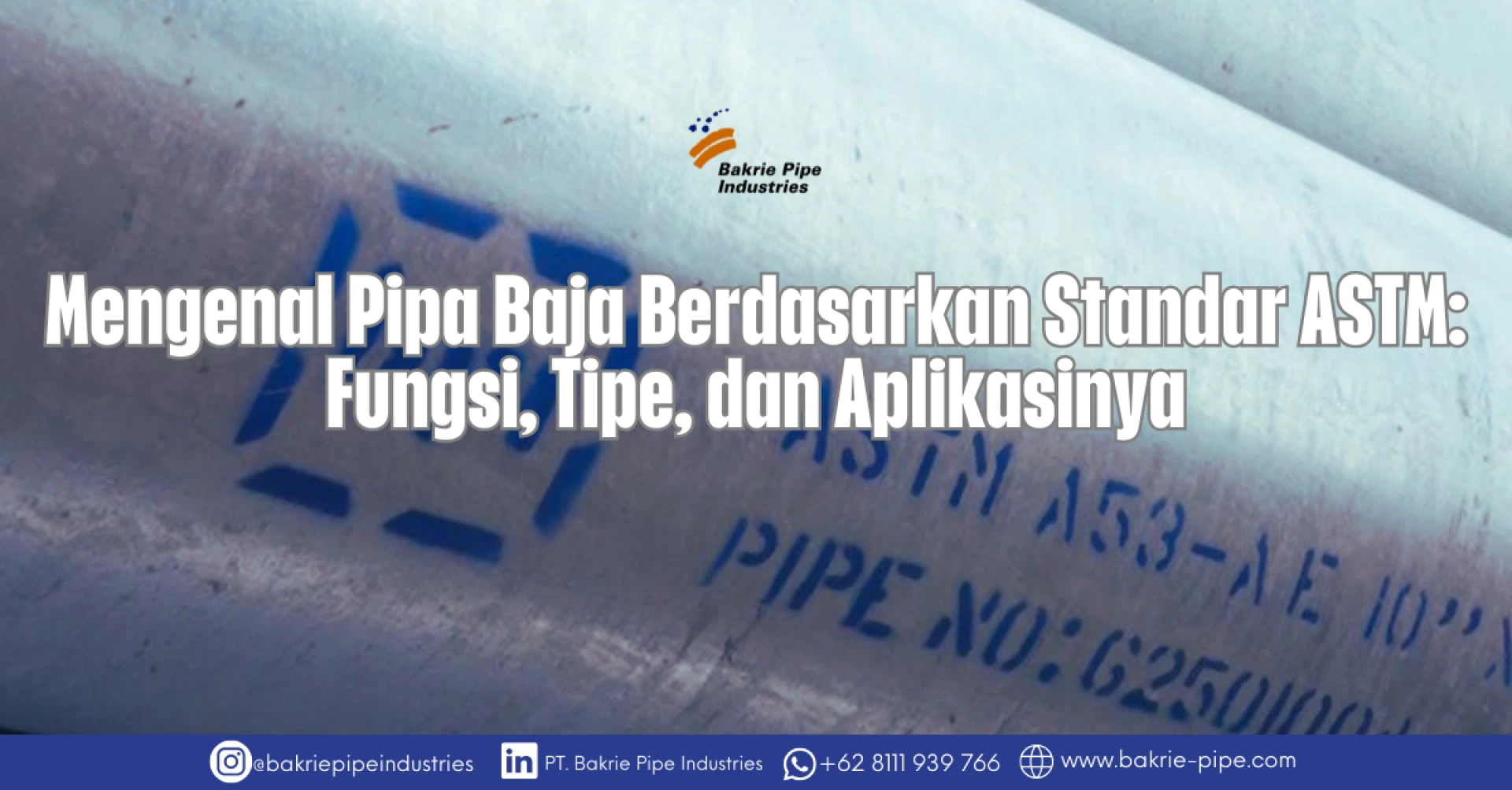Hello Pipe Enthusiasts!
Following #BPIPipeInsights our previous topic “Differences Between SNI 0039 Light, Medium, and Heavy Pipes”, this time we explore an international classification system widely used in export-oriented, heavy construction, and oil & gas projects: ASTM (American Society for Testing and Materials).
As a leading national steel pipe manufacturer, PT Bakrie Pipe Industries (BPI) also refers to ASTM standards, especially in the production of welded steel pipes for pressurized systems, fire protection, and foundation structures.
What Is ASTM?
ASTM International is a global technical standardization organization playing a key role across industry and engineering sectors. ASTM standards define material characteristics, testing methods, and product classification based on technical performance.
In the piping industry, ASTM serves as a trusted reference for manufacturing steel pipes used in critical applications, from high-pressure water and gas systems to fire protection and civil infrastructure.
Types of Welded Steel Pipes Under ASTM Standards
|
ASTM Code
|
Welding Methods
|
Technical Characteristics
|
Typical Applications
|
|
ASTM A53
|
HFW-ERW
|
Carbon steel pipes for water, steam, structural use, and oil & gas
|
Plumbing, mechanical piping, civil works (Grade A), steam and oil pipelines (Grade B)
|
|
ASTM A252
|
HFW-ERW / HSAW Spiral / LSAW Longitudinal
|
Low-pressure structural piling pipes
|
Foundation piles, underground casing, substructure
|
|
ASTM A672
|
LSAW Longitudinal
|
Carbon steel pipes made from plate for high-pressure systems
|
Power generation piping, chemical process piping
|
|
ASTM A795
|
HFW-ERW
|
Lightweight welded steel pipes for fire protection systems
|
Sprinkler installations, commercial buildings, fire safety systems
|
|
ASTM A139
|
HFW-ERW / HSAW Spiral / LSAW Longitudinal
|
Large-diameter spiral-welded steel pipes from plate material
|
Drainage infrastructure, bridge supports, industrial pipelines
|
Note: *HFW / ERW: High Frequency Welding / Electric Resistance Welding, LSAW: Longitudinal Submerge Arc Welding, HSAW: Helical Submerge Arc Welding.
BPI operates production and inspection lines that meet the specifications of all five ASTM standards listed above, including testing methods such as hydrostatic tests, non-destructive testing (NDT), flattening, and tensile strength evaluation.
Can ASTM Standards Be Aligned with SNI?
Although governed by different organizations, several technical elements in SNI 0039:2025 share similarities with ASTM standards, especially regarding wall thickness, pressure classifications, and testing procedures.
SNI serves as the mandatory national standard for public procurement and domestic construction, while ASTM is commonly used for cross-border projects, B2B agreements, and export compliance.
BPI aligns its production process and quality control to fulfill both standards, ensuring customers across sectors receive compliant and technically sound products.
Why Is Understanding ASTM Standards Important?
- Ensures BPI steel pipe compatibility in internationally certified projects
- Guarantees product performance in extreme environments and critical installations
- Supports global audit and certification processes (API/UL/JIS)
- Provides a reliable framework for engineering design and manufacturing precision
Want to know which ASTM pipe type best fits your project?
The technical team at PT Bakrie Pipe Industries (BPI) is ready to assist with product recommendations, requirements analysis, and consultation based on ASTM standards.
